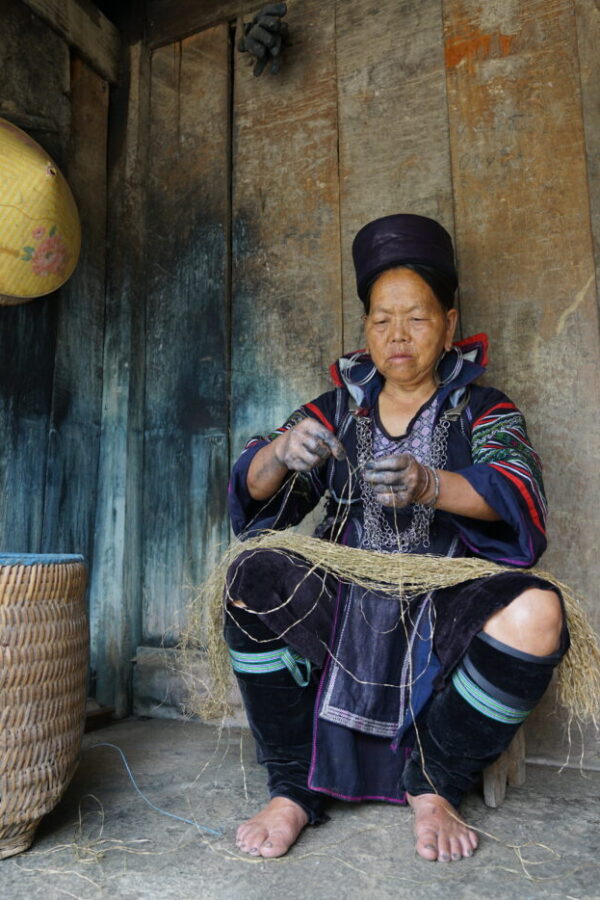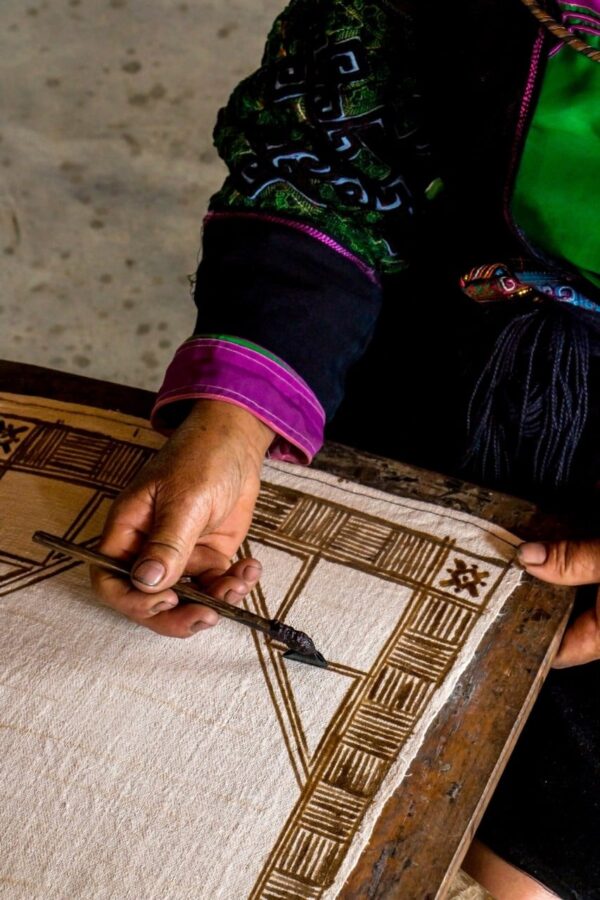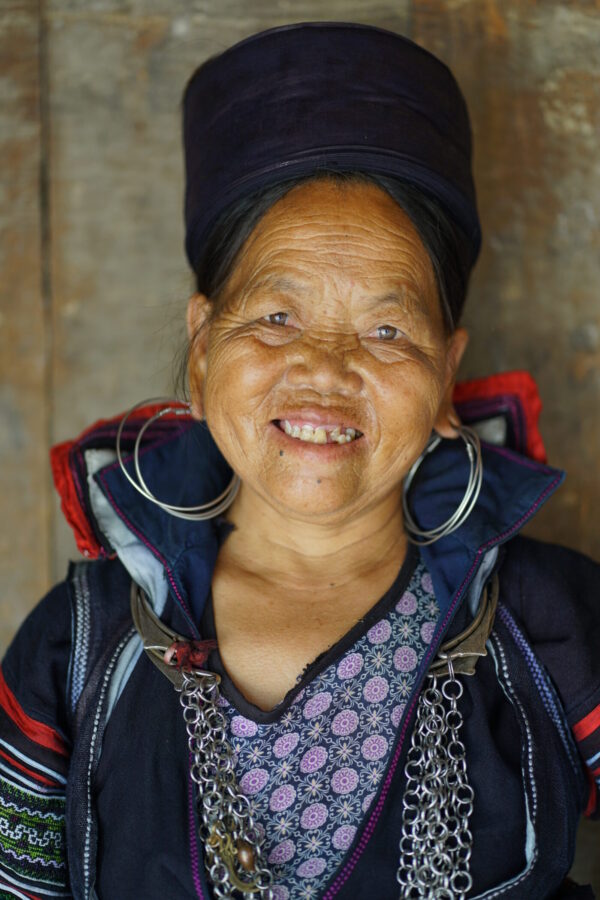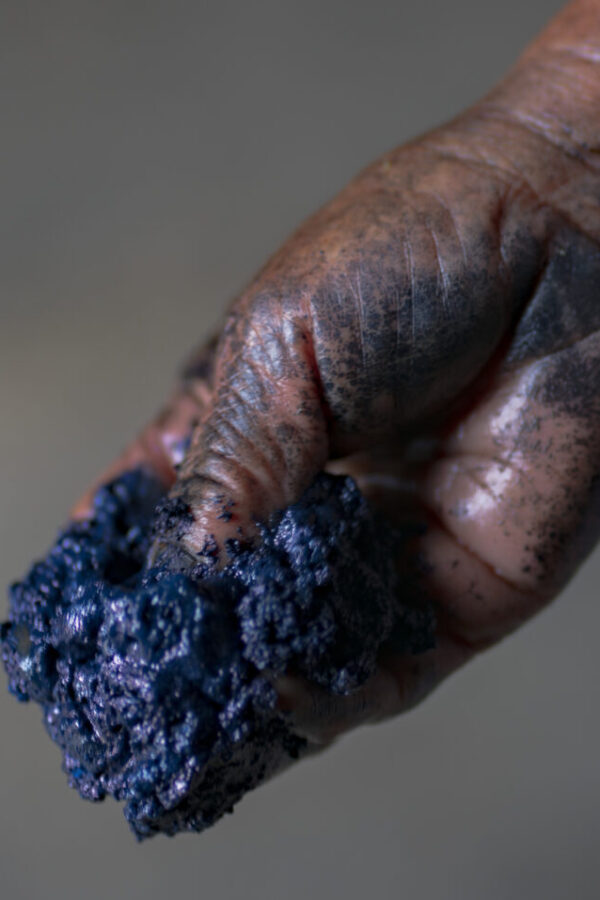Wandering down any of Sapa’s small streets or even within the quiet fields between villages, you will always catch a glimpse of many different kinds of colorful clothing and intricate patterns worn by the women of the surrounding hill tribes. One of the most prominent groups in the area, the H’mong, can always be identified by their colorful headscarves and long, pleated skirts covered in embroidery. But where do they get these pieces of clothing? Keep reading to find out!
Wherever there's hemp...
Hemp plays an important role throughout the H’mong communities. Considered a sacred plant, it is adaptable to harsh weather and has a short life cycle, making it easy to cultivate year-round. While women use it to create clothing for their families, men use it to make a special kind of tobacco for their thuốc lào.
After the hemp is collected, it is left out to dry under the sun for at least 10 days, but only 4 nights to catch a bit of dew to ensure elasticity of the material. The strands are separated by hand and then ground via millstone, washed in leftover bamboo water, and then dried. This process is repeated multiple times until the hemp becomes an ivory white color and silky to the touch, ready to be weaved together into square pieces of fabric by handloom.
Nowadays, many H’mong women buy the hemp fabric ready-made from the shops in Sapa to avoid this long process and start with the dyeing and embroidery decoration. But for true artisans, the process remains the same as hundreds of years ago.


Melting wax to prepare the batik design
There are many kinds of ways H’mong women decorate their fabric, depending on the sub-group. While the Red H’mong and Flower H’mong create their patterns via the applique technique and embellish their outfits with decorative stitching and baubles, the Black and Blue H’mong create their masterpieces through the use of natural indigo dyeing and batik design.
First, they prepare the fire with charcoal for heat consistency and then melt a mixture of beeswax with candle wax together until it comes to a boil. The wax temperature is imperative to the design as if it’s too hot it will be too liquidy and not able to hold a design, while not hot enough means the wax will dry before it can be applied to the fabric.
Traditional H’mong motifs
The designs found in H’mong outfits traditionally served a much larger purpose than simple adornment. Since there is no written language in H’mong culture, the repeating motifs and symbols stood for not only cultural identity in areas where they were not allowed to express themselves but messages and stories as well.
Girls learned the art of embroidery from a young age from other female members of their family, slowly trying more complicated patterns and designs as they got older. Especially important was a girl’s embroidery skills as the better she was at this activity, the higher the chance of her landing a good marriage match.
When a girl was married, her mother would give her a hemp skirt imbued with delicate patterns telling stories through colors and symbols such as the leaf, flower, double-swirled snail, elephant foot, hook, cross, and dragon tails, worn again at death to help aid her in the spirit realm as she went to meet her ancestors in the afterlife.
As the ancient Vietnamese people believed, so too did the H’mong that the sky was round, and the land, a square, so you will often see these base shapes used in many of the foundation patterns within each small square of fabric.


Final steps – natural indigo dye
Contrary to popular belief, the fabric dyeing actually comes last when preparing batik designs. After the wax designs have dried, the women dip these pieces of fabric into naturally prepared indigo vats over and over again to reach the perfect hue of deep, dark blue. For some tribes, the deeper the indigo, the more prized the material is.
Then, the pieces of cloth are hung out to dry, constantly being turned to make sure the color is the same on both sides. With plenty of sunshine, this process can be completed in 3 – 4 days, however, during rainy weather, it can take months to achieve the dark indigo hues.
Once everything is completed, the wax of the design is removed by boiling the cloth in hot water. What’s left is the stark white swirls and patterns against a deep blue/black background. Embellishments will later be added in brighter colors of green, red, purple, and pink, finally stitched together piece by piece to create jackets, skirts, baby carriers, bags, and hats.
